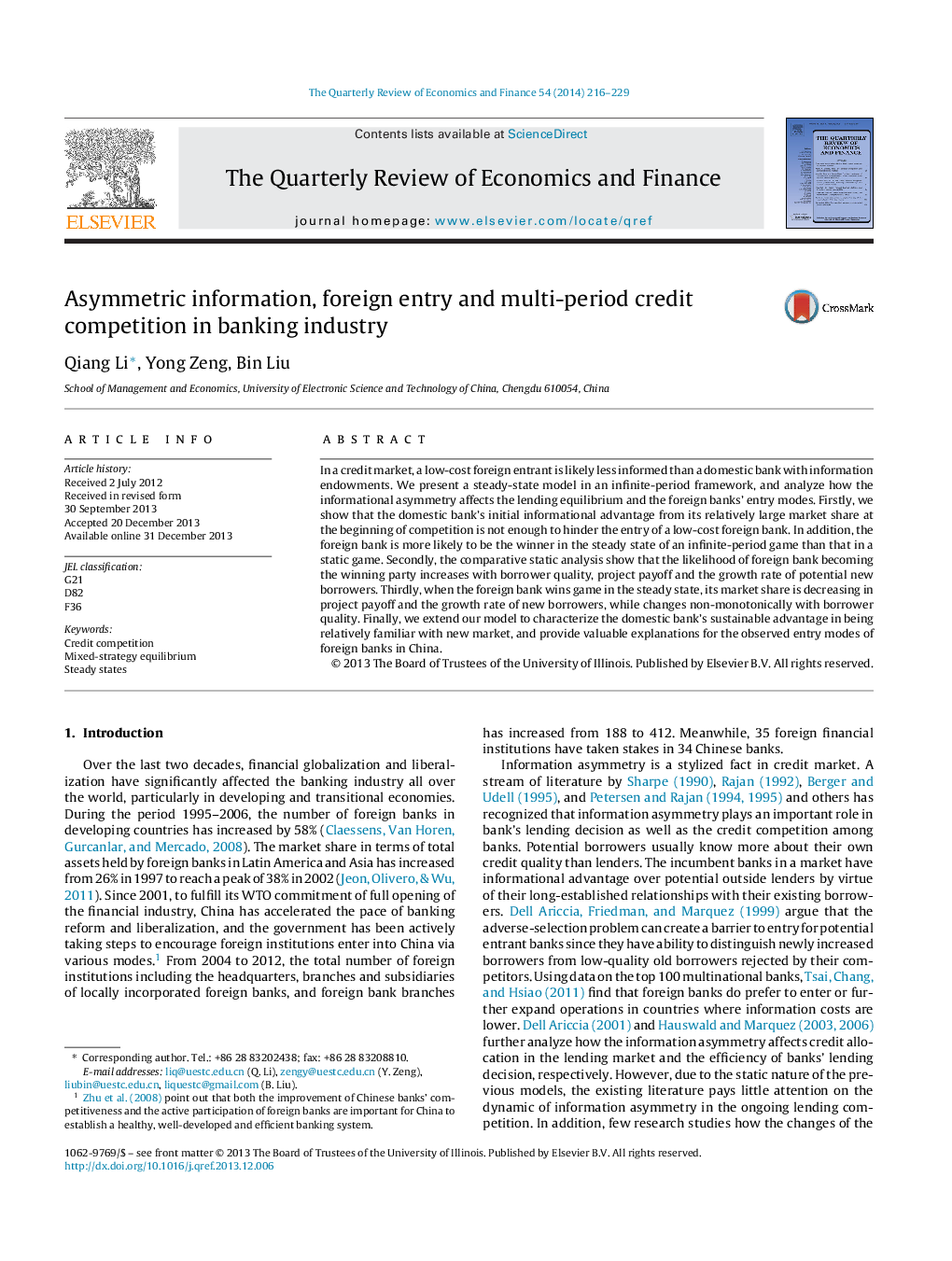| Article ID | Journal | Published Year | Pages | File Type |
|---|---|---|---|---|
| 982230 | The Quarterly Review of Economics and Finance | 2014 | 14 Pages |
•We present a steady-state model in a multi-period lending competition framework.•The domestic bank's initial informational endowment is not enough to hinder the entry of foreign banks with sustainable cost advantage.•When the foreign bank wins the multi-period game, its market share is decreasing in project payoff and market growth, while changes non-monotonically with borrower quality.•Our results provide valuable explanations for the observed development and entry modes of foreign banks in China.
In a credit market, a low-cost foreign entrant is likely less informed than a domestic bank with information endowments. We present a steady-state model in an infinite-period framework, and analyze how the informational asymmetry affects the lending equilibrium and the foreign banks’ entry modes. Firstly, we show that the domestic bank's initial informational advantage from its relatively large market share at the beginning of competition is not enough to hinder the entry of a low-cost foreign bank. In addition, the foreign bank is more likely to be the winner in the steady state of an infinite-period game than that in a static game. Secondly, the comparative static analysis show that the likelihood of foreign bank becoming the winning party increases with borrower quality, project payoff and the growth rate of potential new borrowers. Thirdly, when the foreign bank wins game in the steady state, its market share is decreasing in project payoff and the growth rate of new borrowers, while changes non-monotonically with borrower quality. Finally, we extend our model to characterize the domestic bank's sustainable advantage in being relatively familiar with new market, and provide valuable explanations for the observed entry modes of foreign banks in China.
